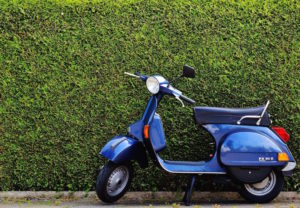VIEW OUR COMMERCIAL
As seen on TV

CHOOSE THE EASY OPTION FOR YOUR INSURANCE, WE’LL GET YOU A QUOTE IN NO TIME AT ALL.
Posts for:
Is 2020 the year you’re going to save money without compromising on cover with your trader’s insurance? This insurance is a must for anyone in the motor trade. From scrapyard dealer or valeter to executive car salesman, it lets you drive any vehicle associated with your business. Use our trader’s insurance checklist for 2020 to get no-fuss peace of mind at the best price.
1) What cars are you going to drive?
Contrary to popular belief, you can’t just drive any car with trader’s insurance. Most policies will let you drive a vehicle that is associated with your business, for business purposes. That includes moving clients’ vehicles, an essential if you run a garage.
If you need extra cover, speak to your broker. And if you’re not sure what your current policy allows, it’s worth double-checking now. If you don’t you could be driving around uninsured.
2) Are you a hobbyist?
Don’t be fooled into thinking that trader’s insurance is going to be too expensive if you’re a part-time trader or someone who deals in vehicles as a hobbyist. It could cost you a lot less than you think, and can be significantly less than taking out temporary cover when you need it.
Whilst most insurance companies will want you to be able to demonstrate that you are part of the trade for at least some of your working hours, you can hold another occupation too. All you need to prove that you are part of the motor trade is proof, such as receipts. For example, these could be receipts for providing valeting or car repairs. Alternatively, you may have receipts from buying or selling cars. If your business hasn’t started trading yet, you may have a grace period to provide evidence. Speak to your insurance broker for more details.
3) Do you drive sports cars?
If you deal with performance and sports cars, check your policy covers you. Performance vehicles can be excluded from cover, so you’ll need to double-check before you buy or work on that Porsche or Ferrari. If you don’t and you’re not covered, it could prove to be a very expensive oversight.
4) Do you need to add extra drivers?
Adding extra drivers to your policy can be cheaper than taking out separate policies. It’s perfect if you have a partner or employ a team. Like personal car insurance, insuring under 25-year-olds can be expensive. Some insurers may not allow it at all. Speak to your broker for advice or to find an insurer prepared to take on younger drivers.
5) Is the pay-out sufficient?
Some trader’s policies use trade valuations if there is a claim. This pays out the trade value, not the resale value. If you’re buying and selling cars, this might be enough for the majority of vehicles you deal with. But if you’re dealing with classic cars or future classics, this could become a problem. If you need cover for vehicles in your workshop, for example for car repairs or valeting, you could also be faced with a shortfall if something happens to a customer’s car. If you want to be certain that you won’t be left out of pocket, speak to your insurance broker for advice.
6) Do you need cover out on the road?
Thinking carefully about what level of cover you actually need is a great way to get premiums down. If you’re not going to be hitting the road in a vehicle, you don’t need cover out and about. For example, if you’re a detailer and cars are delivered and collected from your business premises, you only need cover in the workshop. On the flip-side, you may only need cover for driving on the road, in which case you can save money by excluding cover within premises. If you need both types of cover, look for a combined policy.
7) Is accidental damage important to you?
Most policies automatically cover against fire and theft. But just like a personal motor policy, taking out comprehensive cover can give you extra peace of mind.
No matter how careful you are, accidents can and do happen even when a car is stationary. For example, you’re working on a customer’s car and a heavy box of tools falls and damages the bodywork. With accidental damage cover, you’ll have peace of mind you can pay for the repairs.
Trader’s insurance checklist for 2020 final tip 8) Do you need breakdown cover?
Finally, does your policy include breakdown cover? Buying it together with your trader’s insurance can mean cost savings, as well as giving you peace of mind you won’t have any unexpected bills. Whether you want to be covered for an accidental misfuel or you need home start, you can take your pick of a choice of breakdown options to suit every budget. If you’re trading cars in Europe, make sure you get overseas breakdown cover included.
9) Buy traders insurance from the experts for peace of mind and great value
It’s Easy2 find the right trader’s insurance when you get in touch with our specialist team. Our low prices and high levels of experience make us one of the UK’s favourite commercial motor insurance providers. Call 0800 917 9522, use this form to get in touch or get a quote today.
We hope you’ve found our trader’s insurance checklist for 2020 useful. We’re part of Park Insurance, the award-winning independent insurance brokers. As a result, we’re the ‘preferred broker’ for many national insurers. This means we can offer approved packages with great benefits and plenty of discounts.
As an online brand, our business costs are typically lower than many of our competitors. This allows us to pass on all the savings directly to our customers. We also operate a dedicated UK-based call centre so we can contact you to check all the details before you purchase a product. That means you’ll have peace of mind that you know exactly what you’re buying, with no nasty surprises in the small print.
Easy2insure is regulated by the Financial Conduct Authority, the UK’s independent watchdog. All of our staff members are CII-qualified and use their expertise and experience to guide you through every detail of your insurance policy.
Becoming a self-employed van courier is as easy as, well, buying a van! Thanks to the huge increase in home shopping and with people ordering everything from food to furniture online, van couriers have never been busier. Most couriers either work as sub-contractors for a larger organisation, or are independent operators who have built up their own client base.
The courier industry is incredibly competitive, and a reputation can be made or lost on a single consignment. If all goes well, you can be sure of return business from the customer again and again. But if things go wrong, you could be left seriously out of pocket. That’s why if you’re a van courier you need insurance that will protect you if a customer makes a claim against you.
So what kind of insurance do you need if you’re a self-employed van courier? Here’s our quick guide that will help you put together an affordable insurance package to cover (almost) every eventuality:
Specialist vehicle insurance
Ordinary van insurance will not cover you for commercial use, especially if you’re using your vehicle as part of a courier business. If you check on the average policy they often specify that you are not covered if you use your van for deliveries. As you have to have motor insurance to be legal on the road, you’re going to need to find specialist van insurance that does cover you for commercial use.
Expect to pay a higher premium, though, so it’s well worth shopping around or talking to a broker who specialises in this kind of insurance package.
Goods in transit insurance
As soon as a package, parcel or letter is handed to you, it is your responsibility until it is received and signed for at the other end. After the recipient has the package in their hand, it is no longer your responsibility. However, during the time when it is in your possession, you are fully responsible for its safety, and that means you’re also financially responsible for any losses due to theft or damage.
Effectively, the consignment is the property of someone else, so if it is damaged in transit, lost or stolen, they can claim compensation for the value of the package against you. Goods in transit insurance is, therefore, one of the most important insurance documents you can have as a self-employed courier.
It usually comes with upper and lower limits on the level of cover per consignment, so if you’re regularly transporting high-value packages (for example, if you have a contract with an art gallery and move paintings or works of art around on their behalf), you’ll need to increase your level of cover accordingly. What you don’t want is to be underinsured, as any claim against you for loss or damage of goods in transit will impact your finances heavily.
Public liability insurance
This may seem like a ‘belt and braces’ addition to the Goods in Transit insurance discussed above, but PLI gives you some extra coverage to protect you against compensation claims if a third party is injured or their property is damaged by you while you’re working. So for example, if you dropped a heavy package on the recipient’s foot, they could make a claim against you for personal injury compensation!
Public Liability cover means that you’re financially protected against the legal costs of a compensation claim for personal injury or damage to property. The insurance company would also defend the claim for you, so you could get on with your business rather than spending time dealing with legal paperwork.
Interruption of earnings insurance
Being a van courier has its perks. You’re your own boss, you can work whenever you want to, and you’re not tied to an office desk all day long. However, the reality is that you’re going to be working long, hard hours to earn a decent living. If you’re unable to work for any reason, you’ll quickly realise just how much of an impact it has on your finances.
Bear in mind that if you’re self-employed, you don’t have the usual entitlements that employed drivers have, such as holiday pay and statutory sick pay. If you fall ill or are injured and can’t work, your cashflow effectively dries up overnight. And if you’re the major earner in a household, that can affect everyone.
Interruption of earnings insurance means that you’ll have some money coming in while you recover, so you can be sure that bills such as rent and mortgage repayments, or other essentials are covered without you having to dip into an overdraft or max out your credit cards.
High risks goods cover
If you are regularly transporting hazardous goods then you must tell your insurance company beforehand. Failure to do so could invalidate your cover, leaving you severely out of pocket. Don’t forget that some insurers won’t cover very high-risk consignments such as chemicals or goods that require a special licence or certification.
European cover
If your bookings take you overseas, you’ll need to make sure that the insurance you have covers you for operating outside the UK. It’s also wise to make sure you’ve got full breakdown cover, preferably with a courtesy vehicle as part of your package deal. The last thing you want is to be left stranded with a broken-down van and unable to fulfil your clients’ requirements!
Planning a career change to become a self-employed courier? Talk to the professionals
If you’re not sure what kind of cover you need, the best thing to do is to talk to a professional broker who has experience in providing specialist cover for van couriers. They will be able to tell you exactly what you need, and find the best deal so that you’re not paying too much for your insurance package.
At Easy2Insure, we know how difficult it can be to find the right courier van insurance, especially when you simply don’t have the time to sit down and hunt for deals online. Instead, the simple option is to talk to us. Our experienced brokers know exactly what you’re looking for, and are able to put together courier van insurance packages that don’t cost the earth. It’s quick, simple, and easy to make sure you have all the right cover you need, so you can focus on building your business. Call us or use our online contact form to find out more.
Have you ever watched a group of bikers ride past and thought to yourself, “That’s so cool! I’d love to be able to ride a motorbike!”? Or perhaps you’ve got an old classic motorcycle in the shed that’s been in the family for years, but needs a new carer to get it up and running? Whether you’ve sat on the back as a pillion, or never even been near a motorcycle, riding a bike is getting more and more popular among both men and women.
How hard is it to learn to ride a motorcycle? Here’s a quick guide to what you need to do to pass your test and start your motorcycling journey.
How old do I have to be?
To ride a motorcycle on the road in the UK you need to be at least 16 years and over. There is, however, no upper age limit for riding a motorcycle. Many bikers carry on enjoying riding well into their 60s, 70s or even their 80s. If you feel confident enough to handle the bike while it’s stationary then there should be no reason to stop riding!
There are several different types of motorcycle licence. Unlike a car licence (where you effectively have just two different types – a provisional and a full licence), the type of motorcycle licence you have will depend on what type of test you take and your age.
Types of licence
AM licence
This is intended for those over the age of 16 who want to ride a moped with no L-plates. However, you can ride on the road with L-plates for up to two years by taking the CBT or Compulsory Basic Training course (which all prospective motorcyclists have to take before being allowed out on the road). This means take-up of the AM licence has been low.
The only difference between the AM and the CBT is that an AM licence allows you to carry a pillion passenger on your vehicle. You are still restricted to vehicles of up to a maximum of 50cc with a top speed of around 28mph. Taking a pillion on a small moped would probably guarantee that you’d never get a speeding ticket!
The A1 licence
If you’re over 17 and want to move up from mopeds to larger vehicles once you’ve passed your test, you can apply for an A1 licence. You can then ride a motorcycle or scooter up to 125cc and carry a pillion passenger. After two years, you can then take a further test to upgrade to an A2 licence.
The A2 licence
This is for candidates over 19 years old and lets you ride a motorcycle of up to 500cc and carry a pillion. You can either take an A2 licence practical test after having your A1 licence for two years or, if you’re over 19 you can go straight to the A2 licence test.
The A licence
This is the licence that gives you full access to the world of motorcycling, as long as you’re over 21. A full A licence allows you to ride any size motorcycle. So if you’ve got a hankering for that Harley Davidson 1200cc cruiser then this is the licence to get. There are two routes to get your A licence. 1) You can go for a practical test after you’ve held an A2 licence for two years and effectively ‘upgrade’. 2) Alternatively, go through a Direct Access course with a qualified DAS instructor, which will include your CBT, theory and both Mod 1 and Mod 2 practical tests.
1) You can go for a practical test after you’ve held an A2 licence for two years and effectively ‘upgrade’.
2) Alternatively, go through a Direct Access course with a qualified DAS instructor, which will include your CBT, theory and both Mod 1 and Mod 2 practical tests.
Do I have to do a theory test?
Yes. Even if you already have a car licence, you will need to complete a theory test, which includes extensive questions on roadcraft, and a ‘Hazard Perception’ test. Once you’ve done the theory test you have up to two years to complete the rest of your training and tests, otherwise you’ll need to resit the theory test again.
The CBT
Compulsory Basic Training has to be completed by all motorcyclists, regardless of age or which licence they’re going for (or even if you just want to ride on L-plates without taking your motorcycle licence at all). A CBT course takes a day and should cost you around £100-£135. If you’re still not sure whether or not you want to go on to ride a motorcycle full time then a CBT is a good place to start, as it will give you the opportunity to ride for up to two years on L-plates so you can work out if you want to go further with your motorcycling journey or not.
You’ll do a classroom lesson and an off-road (or ‘pad’) section where you’ll learn how to manoeuvre the motorcycle, simple daily checks, and how to control the vehicle slowly. Then you’ll go out on the road with an instructor so that they can see you’ve understood what you’ve learned in the classroom and on the pad, and can translate it into ‘real-life’ conditions.
Going for your full licence
If you’ve done your CBT and your theory test, you can then go on to train for your full licence. For any of these, you’ll need to do a Mod 1 and a Mod 2 test. Mod 1 is your chance to show the examiner that you can control the bike through a series of set manoeuvres such as a U-turn, a slow slalom and a figure-of-eight, wheeling the bike, and that all-important emergency stop. It takes approximately 15 minutes and is the most intense part of the test, so you’ll need to make sure your instructor takes you through the required syllabus very carefully.
Mod 2 is an on-road test, where the examiner follows you for around 40 minutes along set routes to see how you respond to traffic, that you’re safe on the road, and that you’re confident on the motorcycle.
Phew! After all that, and as long as it’s all gone well, you’ve got your motorcycle licence and can start enjoying your riding!
Is it expensive?
Honestly? Yes. It is expensive to get your motorcycle licence these days. Expect to pay anything from £800 upwards for a full Direct Access course (including CBT and Theory tests). It’s also physically intense, with training crammed into just a few days and with the tests for Mod 1 and Mod 2 at the end of the course.
Is it worth it? Well, just look at the grin you’ll see on any motorcyclists’ faces as they glide effortlessly through the traffic and then out onto the open road, and you’ll see that it’s absolutely worth every penny!
There’s nothing better than getting your motorbike out on a sunny day, blasting off down the road and just riding. The destination isn’t that important, what matters is the journey! When the sun is shining, there’s no feeling in the world quite as liberating or as enjoyable as riding through the countryside with the wind in your hair.
But how about when the sun dips behind a cloud, or you have to ride all year round to get to work? Riding a motorbike in wet weather isn’t as daunting as it may sound. With a little bit of preparation, you may even get to enjoy it!
Why ride in the wet?
To become a better, all-round rider, you need to keep improving your skills. In the UK, we’re more likely to be heading out when it’s raining. So learning to ride confidently and safely in wet weather is a must. Even if you set off in bright sunshine, the fickle British weather can mean that you end up riding into a damp patch. If you’re not confident or experienced in riding in wet weather, you can’t simply leave the bike at the side of the road and walk home. Instead, you’ll need to know how to cope with the changing road conditions if you want to reach your destination safely.
If you’re a new rider or even an experienced rider that just hates riding in the wet, here’s a quick guide to help you cope with wet weather riding.
Check the bike
You should be doing weekly (and even pre-ride) checks. If you know you’re going to be riding in wet weather, there are a few important steps you need to consider. Bikes do behave differently in wet conditions but don’t worry, it’s not as dramatic as you might think.
Tyres
New tyres have deep grooves cut into the rubber. This helps to displace the water as you’re riding and give you a better contact patch with the road. Even in dry conditions, your contact patch with the road is approximately the size of a credit card. So you can understand how important it is to make sure that contact patch in wet conditions is as good as it can be.
- Check the condition of your tyres if you’re going to be riding regularly in wet weather.
- Ensure that you keep a very close eye on your tread depth. This maximises the amount of water dispersal, and give you better contact with the road surface.
- Also, make sure that your tyres are inflated to the correct pressure. Under-inflated tyres won’t give you any additional grip on the road (and will wear faster). Over-inflated tyres will reduce the amount of grip you have.
Brakes
Wet weather will, inevitably, reduce the efficiency of your brakes. Give yourself additional space and braking time (remember to at least double your usual two-second gap between yourself and the vehicle in front to allow for the conditions).
Normally when riding a motorcycle in the dry, we tend to rely more on the front brake for stopping than the rear. In wet weather ‘grabbing a handful’ of front brake could easily cause the front of the bike to twist and skid. In wet weather, balance your braking evenly between your rear and your front brake, applying the rear brake marginally earlier than your front, and squeezing both gently. Harsh braking in wet conditions is definitely not recommended!
Electrics
Motorcycle electrics are exposed to the elements, and in wet weather can be adversely affected, especially by torrential rain or surface water. If you are riding all year round, silicone wrap may help to keep water off the most sensitive electronics.
Lights
In wet weather, visibility is reduced considerably. Not only does the water on windscreens reduce the amount car drivers can see, but even raindrops on car wing mirrors can almost obscure the view of other vehicles the driver has. To counter this, ride with your headlight on in wet conditions so you can be seen by other vehicles.
Slow down!
Wet conditions mean that the road surface can have additional hazards such as standing water. This can cause aquaplaning – when a layer of water between the road surface and the tyre causes the vehicle to lose traction. You will need to adapt your riding style to the conditions, and the most important thing to do is to slow down. You don’t need to crawl along at 5mph, but a small drop in speed will give you more time to react to the changing conditions.
What to wear
To help other drivers see you in wet conditions, a ‘Sam Brown’ Hi-Viz belt or jacket will increase your visibility. Don’t forget your own comfort, either. Firstly, if you’re wet and cold you won’t be able to concentrate properly on the road. Make sure you have adequate waterproof clothing to keep you as dry as possible. If you’re riding all year round, a set of handlebar ‘mits’ will help to protect your hands against the weather. That means you will always have full control of the vehicle. If you’re planning on riding in the coldest conditions then consider heated gloves or grips to keep your hands warm.
Unfortunately, the Holy Grail of a 100% waterproof pair of boots hasn’t been achieved yet (despite what some manufacturers may say!) An old dispatch rider’s trick of popping plastic bags around your feet before you put your boots on may help your feet stay a little bit drier!
Visibility – keeping your visor clear
Visors can quickly mist up during wet weather, so either invest in some rain repellent spray or keep your visor open just a crack at the bottom to reduce any fogging. The clearer you can keep your visor, the better.
Trust the bike!
Motorcycles are just as stable in wet conditions as they are in the dry, as long as you adjust your riding technique and ride according to the conditions. As you get more ‘wet miles’ under your belt you’ll become more confident of riding in more challenging conditions. Remember – where you look is where the bike will go. Always look well ahead and read the road conditions as far in advance as you can.
Road conditions – what could be a hazard?
One of the biggest hazards to motorcyclists in the wet is the road itself. Puddles may be hiding deep potholes that can be potentially dangerous to motorcyclists. Take care when approaching them, especially if they’re close to the edge of the road. Road markings (white lines) become incredibly slippery when wet. Cat’s eyes in the middle of the road can also be treacherous in the rain. In very cold conditions be aware that shiny patches on the road could easily be ‘black ice’. Watch out for wet leaves in the autumn, too, as these can be far more slippery than you think.
When to say no and leave the bike at home
Finally, if road conditions really are that bad, consider if your journey is really necessary. If you do have to go out, think about an alternative form of transport. There are times when riding a motorcycle in the rain stops being fun, so leave it in the garage until the sun comes back out!

















